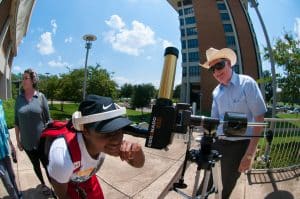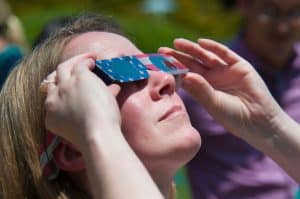What to expect from the 2024 solar eclipse
While Alabama will not be in the path of totality for the 2024 solar eclipse, it will still offer prime viewing.
For viewers in Montgomery and other portions of Alabama’s RiverRegion, “about 81 percent of the sun’s surface will be covered,” according to Auburn University at Montgomery Associate Professor Randy Russell. “The eclipse here in Montgomery starts at 12:40 [p.m.] Central Daylight Time and lasts until 3:17. The maximum amount the eclipse will occur at 1:59 p.m.”

AUM will host a public viewing of the eclipse on Monday, April 8, from 1:30 p.m.-2:30 p.m. between the Library Tower and Goodwyn Hall. Telescopes and International Organization for Standardization-certified glasses will be available for safe viewing.
Russell, who teaches astronomy, physics and physical sciences in AUM’s College of Sciences, said it’s important to take appropriate precautions for viewing the eclipse.
“You should never look at the sun with unprotected eyes,” Russell said. “You should use glasses that are ISO certified and specifically designed for viewing the sun. They should have stamped on them ISO certification. These glasses will block out not only most of the visible light but also all of the damaging infrared and ultraviolet light.”

If you miss out on next week’s opportunity, you’ll be waiting a while for the next eclipse. A total solar eclipse will cross the United States again in 2044, but will only be viewable in states like Montana and the Dakotas. Another total solar eclipse will happen in August 2045, with a path of totality crossing from California into the Southeastern United States.
